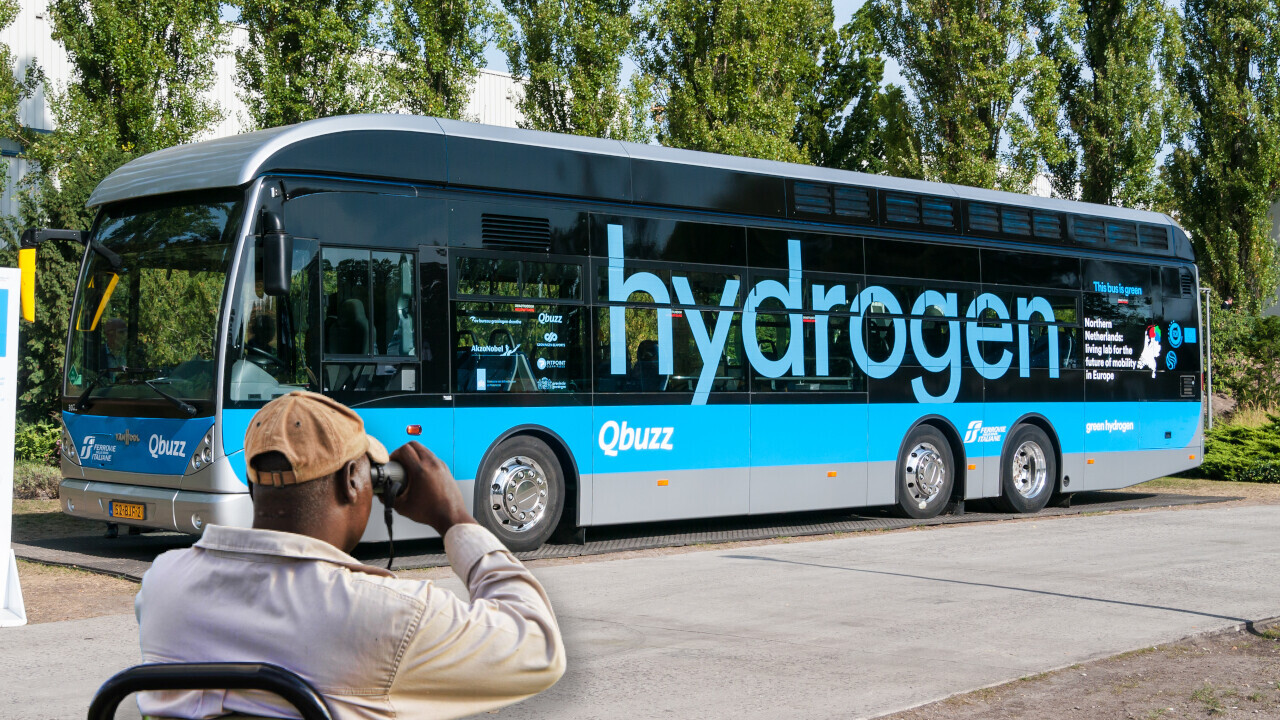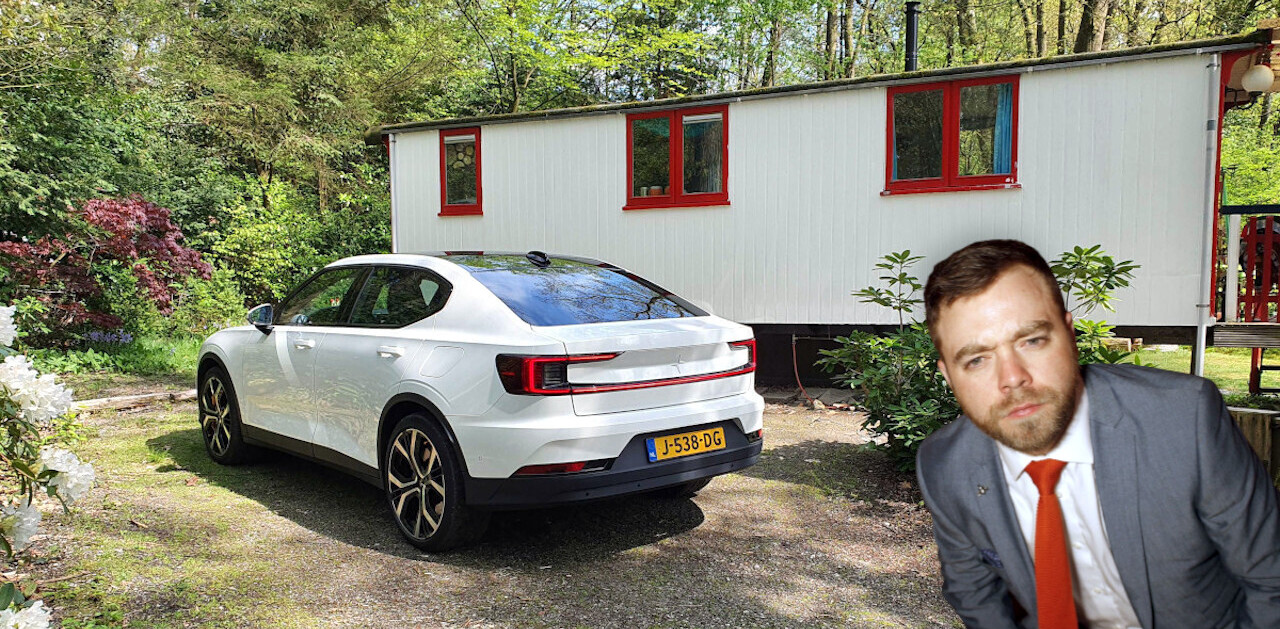
This article was written by Natalie Sauber, Market Intelligence Lead at Arcadis UK on The Urban Mobility Daily, the content site of the Urban Mobility Company, a Paris-based company which is moving the business of mobility forward through physical and virtual events and services. Join their community of 10K+ global mobility professionals by signing up for the Urban Mobility Weekly newsletter. Read the original article here and follow them on Linkedin and Twitter.
Why is everyone talking about hydrogen?
If hydrogen fuel is the future, it has been for quite some time. In 1874, science fiction author Jules Verne set out a prescient vision of hydrogen as an inexhaustible source of energy that has inspired governments and entrepreneurs ever since. During the oil crisis in the 1970’s, hydrogen resurfaced once again as a potential alternative fuel for cars and, in 2003, George Bush heralded hydrogen vehicles during the first wave of real concern about climate change. Now, 147 years after Verne’s famous novel ‘The Mysterious Island’, and at a time when the climate challenge has never been so urgent, hydrogen once again claims the spotlight.
The big picture and why it matters
In June 2019, the UK became the first major economy to set a legally binding target to cut its greenhouse gas emission to net zero by 2050. This would be a reduction of about 100% relative to 1990 levels. In March 2021, the government announced that we are already halfway there. The milestone was reached after a record-breaking 11% fall in greenhouse gas emissions in 2020, largely due to a temporary reduction in economic activity during the coronavirus pandemic. However, this probably was a temporary “blip” and with the economy in the process of bouncing back, levels are expected to increase once more. So how do we make sure we stay on the right path?
The single largest source of greenhouse gas emissions in the UK is transportation, accounting for around 27%. Worryingly, transport has also so far been the worst performer in terms of emissions reduction – achieving only a 2% decrease compared to 1990 levels. Even though we need to make significant progress, electric cars are almost exclusively dominating the conversation, to the detriment of alternatives, such as hydrogen, that could play a strong role. To change the dynamic, the UK government recently announced £171 million in funding for nine projects to reduce emissions and develop full-chain hydrogen projects, while outlining a plan to introduce carbon pricing on industrial pollution as part of its climate change strategy.
Hydrogen in a nutshell
Hydrogen is the lightest known element in the periodic table. It is also the most abundant substance in the universe, accounting for almost 90% of all matter. Hydrogen is extremely versatile and can be used to create very complex hydrocarbon molecules, such as natural gas and oil, amongst others. One of the largest sources of hydrogen is water, which can be split into hydrogen and oxygen by use of electricity, a process called water electrolysis. To generate electricity, hydrogen and oxygen then react via proton exchange across an electrochemical cell, similar to a battery. This process generates an electric current, small amounts of heat, and exhaust water in the process, making it a very clean source of power, with zero carbon emissions.
Hydrogen and passenger vehicles
Even though electric vehicles (EVs) are not fully mainstream (yet), manufacturers continue to develop new models in line with government regulations, steadily increasing consumer demand, and growing investment into supporting infrastructure. Sales of battery electric vehicles (BEVs) and plug-in hybrid electric vehicles (PHEVs) made up 4.2% of the global car market in 2020, up from only 2.5% in 2019.
For hydrogen to catch up it would require tremendous policy support, since there are not enough vehicles on the road to warrant massive fuelling station build-out programmes. As of now, only three Fuel Cell Electric Vehicles (FCEV’s) passenger models exist in select markets: Toyota Mirai, Hyundai Nexo, and Honda Clarity. The lack of investment and development has meant that vehicle costs remain high compared to alternatives, making hydrogen a less attractive choice for consumers. It seems clear that BEV passenger vehicles will be the winner in the short to medium term.
The question then really is around how to decarbonise the larger vehicles in the market. There are good reasons to think that these are unlikely to take advantage of the same electric battery technology as their smaller counterparts, primarily due to the significant weight and volume of batteries. However, hydrogen use is developing quickly in road transportation, especially for buses and larger commercial vehicles.
Let’s talk about buses
Despite impressive advances, bus battery technology is still not optimal, particularly due to poor range and quicker battery discharge in cold weather. To avoid putting all their clean energy eggs in one basket, the UK has consistently been evaluating hydrogen fuel cell as an alternative. With the “Bus Back Better”, a new national strategy, the UK government has committed to ending the sale of new diesel buses and increasing sales of British-built, zero-emission models. As part of this move, Wrightbus is planning to introduce 3,000 hydrogen buses to the UK, with the first 50 soon to be deployed across several cities.
The upfront costs for hydrogen-powered buses were originally substantially higher than either diesel or electric models, with figures close to £1 million each. Due to technological advances, prices have dropped remarkably since the early deployments to be in line with electric alternatives. Since hydrogen buses are able to store more energy on board than equivalent battery buses, they are able to serve longer routes and can be refuelled within a few minutes. Electrolysis, unlike battery charging, places a relatively steady demand on the energy network throughout the day and requires strong investment in the available infrastructure to accommodate a growing number of buses. So far this is only possible at select stations. For example, Aberdeen’s King Street depot had to undertake some major work, from electrical points at each parking bay to pre-heat vehicles, to roof sensors mapping the levels of hydrogen in the atmosphere, and modifications to workshops. To make the technology viable across the country, significant investment would be required.
Hydrogen and trucks
While only accounting for 2% of vehicles in the EU, trucks are responsible for 22 per cent of road transport carbon emissions, according to Transport and Environment. Europe’s truck-makers have agreed to work together to help create the right conditions for the mass-market roll-out of hydrogen trucks. Iveco, Daimler and Volvo have joined forces with energy companies Shell and OMV to form H2Accelerate, aiming to help hydrogen trucks achieve a breakthrough across the continent.
At the same time, in Switzerland, Hyundai has started delivery of their XCIENT fuel cell electric vehicles (FCEVs), with a planned rollout of 1,600 trucks by 2025. The trucks are powered by a 190kW Hydrogen Fuel Cell with approximately 400km range on a single charge. This is the type of ambition that the UK should be matching to develop the infrastructure and support deployment of the technology at scale.
Possible solutions for the current ‘chicken and egg’ problem of incentivising hydrogen supply and the development of new hydrogen vehicles could be addressed by creating ‘hydrogen transport clusters’ via industrial areas with potential sources of low-cost, low-carbon hydrogen (such as Aberdeen or Tees Valley), which also have significant demand for transport with vehicles largely tied to these areas. Shell and ITM Power are developing a refuelling network for hydrogen trucks as well as buses, trains, and ships for the UK, but there is a long way to go. With no serious distribution infrastructure in place, it might be at least 5 to 10 years before hydrogen can be used on a large scale for heavy-goods vehicles
As a step in the right direction, the UK government recently provided £54 million of funding for three projects to develop hydrogen powertrain technology for use in commercial vehicles and buses, while £32 million will go directly towards the development of electric propulsion systems for heavy goods vehicles.
It is often argued that BEVs will be used for shorter ranges, while biofuels will find use on longer distances, leaving no middle ground for hydrogen. The deciding factors between hydrogen and battery are mostly around operational considerations, such as range, payload, refuelling time, and available infrastructure. Powering trucks with batteries is not as straightforward an option as it is with cars, as the additional weight equates to a loss of cargo capacity of about 4 tons, or about 10%, per truck. These large commercial vehicles simply cannot afford to sacrifice the payload to accommodate the weight of batteries.
Barriers and challenges
There are around 15 hydrogen refuelling stations across the UK, the infrastructure far less developed than the BEV charging network. As a result, fuel cell vehicle uptake is lagging behind that of battery electric cars and major OEMs have been pulling out of the hydrogen race, with Scania being the latest. At the same time, several key manufacturers, including Toyota and Hyundai, remain committed to FCEV development, while the government is supporting a new hydrogen platform development scheme as part of Jaguar Land Rover’s ongoing transformation programme. Before hydrogen has a chance to become mainstream, there is significant work required, from large-scale production to refuelling infrastructure investments.
A major aspect holding back widespread hydrogen fuel cell adoption is the predominant process of hydrogen generation. Approximately 85% of hydrogen is produced from methane and therefore extremely polluting. Electrolysis of water, while promising and clean, is not yet efficient enough, nor available on industrial scale. The process of splitting hydrogen from oxygen consumes around three times more energy than can afterwards be generated by the fuel cell inside a vehicle, lagging in the energy efficiency that can be achieved with BEVs.
At this point, the discussion often turns to costs, as hydrogen remains more expensive than its petrol or BEV competitors, partly due to the sophisticated technology involved. Luckily, this is changing fast. Renewable energy generation is increasing steadily, as installation costs continue to tumble due to advancements in manufacturing. As the input into the electrolysis process is getting cheaper, so does hydrogen. In addition, a growing industry will benefit from economics-of-scale (incl. automation and digitalisation), a process petrol and BEV vehicles have already gone through, while scientists work tirelessly to improve the process of hydrogen generation, with compelling advances over recent years. Finally, costs of carbon are expected to increase dramatically, and this is part of the equation in making hydrogen more affordable. As we continue to develop the industry and push on the frontiers, we can expect it to be competitive with alternative fuel sources.
What would Verne say (WWVS)
Almost 150 years after Jules Verne first imagined a world powered by hydrogen, it is still not clear how prescient the idea really was. Significant investment by private companies and governments into BEV technology has led some observers to declare the race for the preeminent environmentally friendly power source to be over. While this article points out interesting developments for hydrogen-fuelled buses and trucks, it is important to mention ships and airplanes, where the advantages of hydrogen may prove Verne right all along.
Do EVs excite your electrons? Do ebikes get your wheels spinning? Do self-driving cars get you all charged up?
Then you need the weekly SHIFT newsletter in your life. Click here to sign up.
Get the TNW newsletter
Get the most important tech news in your inbox each week.





